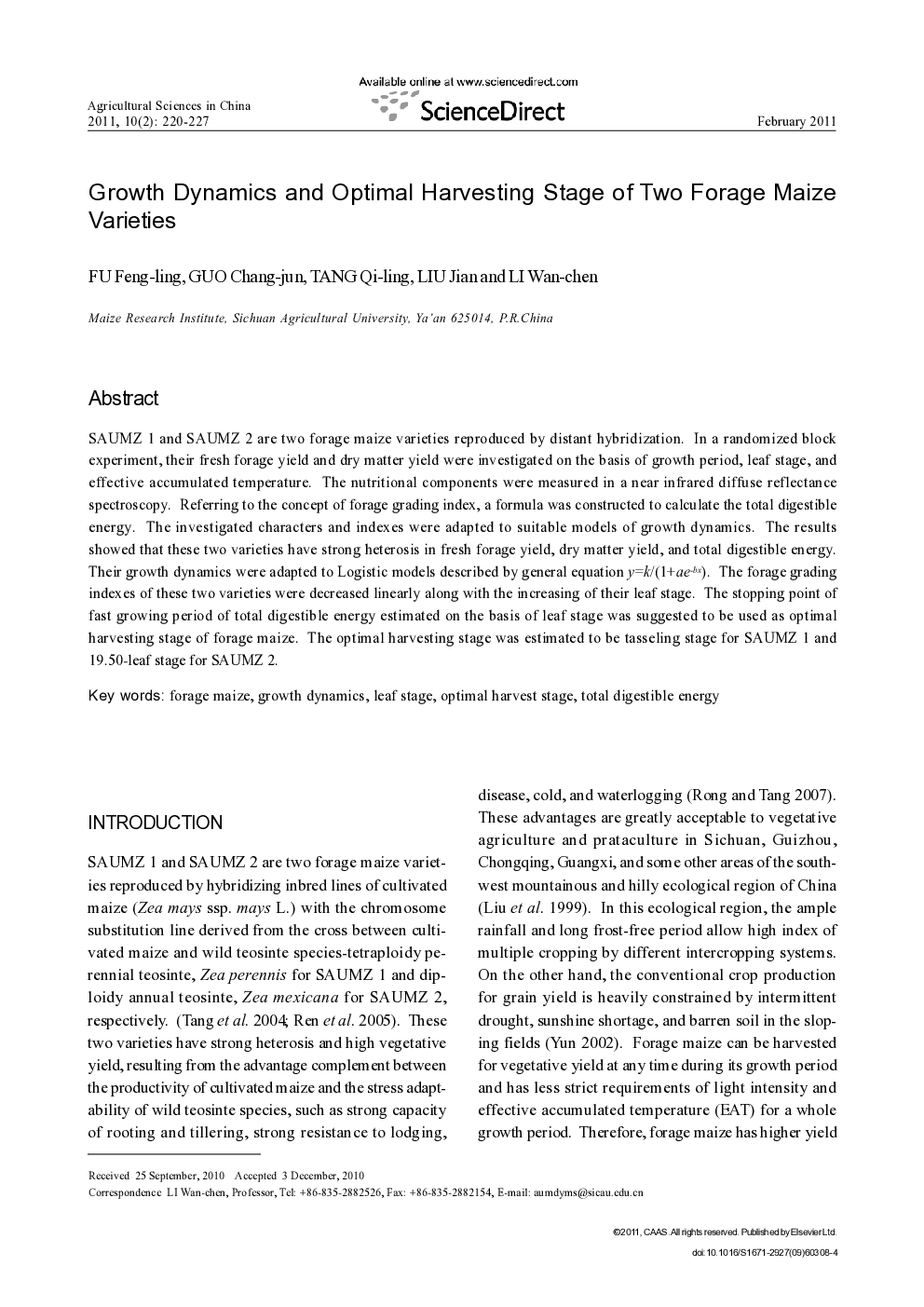| Article ID | Journal | Published Year | Pages | File Type |
|---|---|---|---|---|
| 4489902 | Agricultural Sciences in China | 2011 | 8 Pages |
SAUMZ 1 and SAUMZ 2 are two forage maize varieties reproduced by distant hybridization. In a randomized block experiment, their fresh forage yield and dry matter yield were investigated on the basis of growth period, leaf stage, and effective accumulated temperature. The nutritional components were measured in a near infrared diffuse reflectance spectroscopy. Referring to the concept of forage grading index, a formula was constructed to calculate the total digestible energy. The investigated characters and indexes were adapted to suitable models of growth dynamics. The results showed that these two varieties have strong heterosis in fresh forage yield, dry matter yield, and total digestible energy. Their growth dynamics were adapted to Logistic models described by general equationy=k/(1+ae−bx). The forage grading indexes of these two varieties were decreased linearly along with the increasing of their leaf stage. The stopping point of fast growing period of total digestible energy estimated on the basis of leaf stage was suggested to be used as optimal harvesting stage of forage maize. The optimal harvesting stage was estimated to be tasseling stage for SAUMZ 1 and 19.50-leaf stage for SAUMZ 2.
